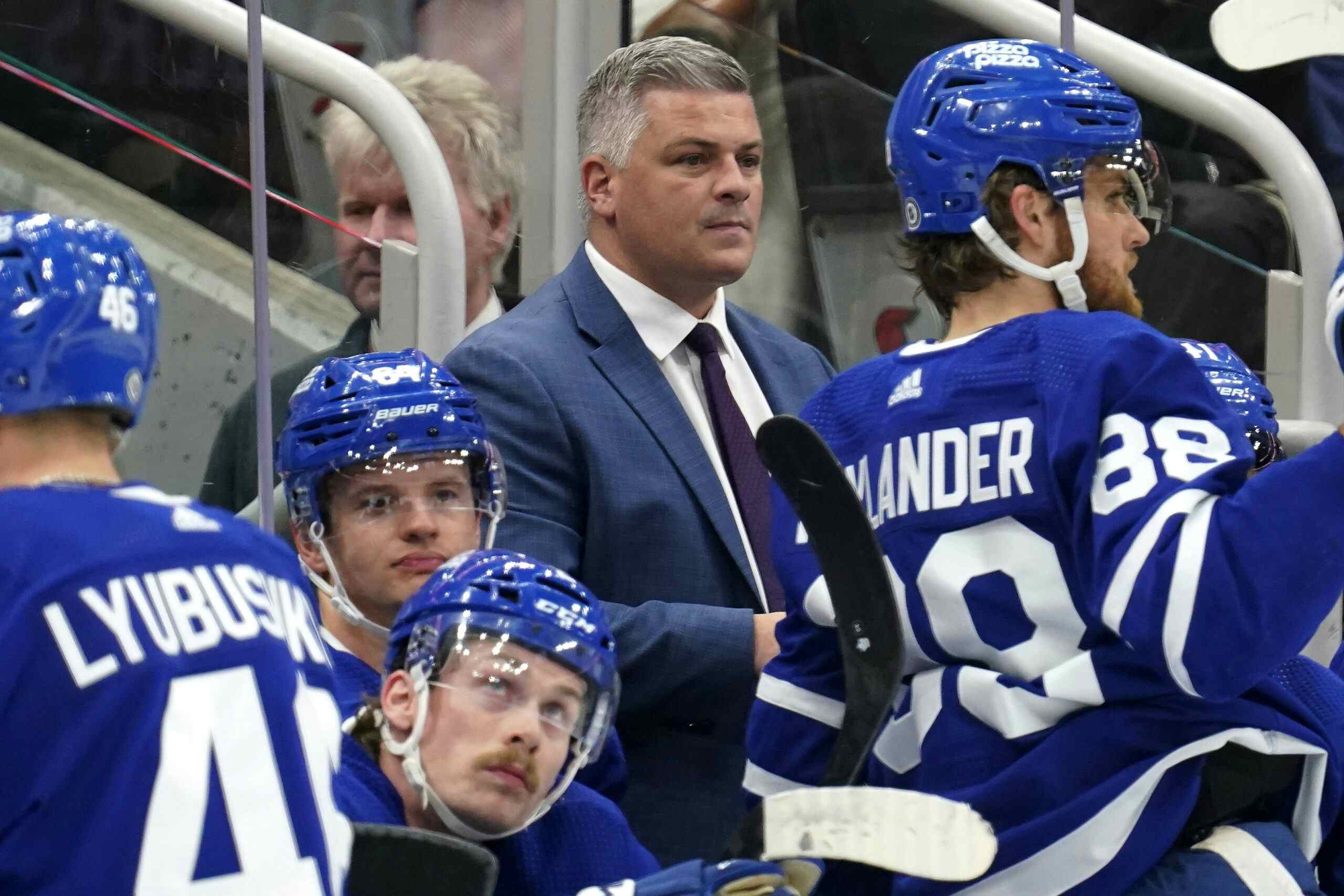Why the Leafs Have Been Underperforming at Home

By Ian Tulloch
6 years agoHome ice advantage – for the longest time I didn’t believe it existed. I thought it was an overrated trope that people used to push a narrative during the playoffs. I figured there was no way that playing in your home arena could magically improve your play. The dimensions of the ice don’t change; the net’s the same size; it’s still hockey. I didn’t think something as trivial as where the game was played could impact the outcome.
I was wrong.
 Is this phenomenon a result of players feeding off of the adrenaline from their home crowd? Is it the social pressures that the referees face? The honest answer is: we don’t really know. The research is still pretty murky on why this advantage exists, but we do know that playing at home significantly improves teams’ chances of winning. Although its effect in hockey isn’t as pronounced as in sports like basketball or football, try telling a gambling degenerate like Dom Luszczyszyn that a 5% swing in probability doesn’t matter – that nerd obsesses over The Extra 2%.
Is this phenomenon a result of players feeding off of the adrenaline from their home crowd? Is it the social pressures that the referees face? The honest answer is: we don’t really know. The research is still pretty murky on why this advantage exists, but we do know that playing at home significantly improves teams’ chances of winning. Although its effect in hockey isn’t as pronounced as in sports like basketball or football, try telling a gambling degenerate like Dom Luszczyszyn that a 5% swing in probability doesn’t matter – that nerd obsesses over The Extra 2%.In all seriousness though, home-ice advantage clearly matters. For whatever reason, teams perform much better at home. They generate more shots, chances, and goals than the opposition on average. This is why it’s important to have Venue (Home/Away) adjustments when we go through the numbers – teams are expected to perform better at home, so we shouldn’t get overly excited when our favourite team controls 53% of the shots at home. To quote Chris Rock, “that’s what you’re supposed to do.”
What’s strange about the Leafs is that their home-ice advantage…hasn’t really been an advantage this season. They’re actually the only team in the NHL that performs worse at home than they do on the road.


As you can see, every team in the NHL performs much better at home than they do on the road, with Toronto being the exception. Just think about that for a minute. A team like San Jose controls 10.5% more of the Expected Goal share (46.4 xGF% on the road, 56.9 xGF% at home), meanwhile Toronto gains no advantage from playing at home – in fact they’ve played slightly worse at the ACC this season. They’re clearly the outlier here, so it begs the question: why is this happening?
I’ve come up with two major reasons:
- Balancing the lines
- Line-matching
Let’s start with my first point.
Balancing the Lines
For those who may not know, home teams are given the last line change in hockey. This means that home coaches essentially get to choose their matchups, allowing them to shelter certain players and bury others with difficult minutes. On the road, however, coaches have much less control over who their players face.
In a weird way, this has forced Mike Babcock to balance the Leafs’ lineup more on the road. For example, you can shelter a terrible line at home, but if you play that same line on the road, opposing coaches are going to try to get their best players out against them. To prevent this from happening, Babcock has typically played more balanced lines on the road this season, most notably with his 4th line.
Earlier in the year, there were times where he would shift Marleau to centre and move Bozak to the 4th line. There were also times (and continue to be times) where he plays Marner or Nylander on the 4th line when he’s upset with their defensive play. As frustrating as this is has been for fans, it’s worth noting that these fourth lines have been very effective this year (as they should be, considering they feature 1st line talents going up against easy competition).
The take-home point here is that Toronto’s makeshift 4th lines have been effective this year, and it’s important to note that they’ve typically been used on the road. What a lot of people don’t realize is that Toronto’s actual 4th line has been awful this season.
There’s no way around it; those are inexcusable results, especially when you consider that they’re mostly coming against opposing 4th lines. There’s essentially a gentleman’s agreement between coaches to play their 4th lines against each other, so if you can’t come close to breaking even against the dregs of the NHL, you have a serious problem. To put things in perspective, the average 4th line has an xGF% in the 48-49% range.
Something clearly has to be done with the Leafs’ 4th line. The Martin-Moore-Brown combination was getting shelled at even strength, so Toronto tried calling up Gauthier to solve the problem. As James Mirtle recently pointed out, that hasn’t been working either. Now it appears that they’ll be trying something different:
Leafs Twitter blew up after these line combinations were announced. After watching the team play sluggish, chip & chase hockey for over two months, seeing a lineup filled with speed and skill for once was a breath of fresh air. As Leafs fans, though, we know that we can’t get excited for too long before something bursts our bubble…
This leads me to my second point.
Line Matching
This season, Babcock has been using the last change to force-feed the Kadri line tough matchups, while heavily sheltering the 4th line and Selke candidates JVR, Bozak, and Marner. The problem with this usage is that the Kadri line has been getting eaten alive at home this season.

I’ve heard many smart Leafs fans mention that if the Kadri line can break even against tough matchups, the other lines will feast on easier competition and the team will come out well on top. The problem is that Kadri & company haven’t been breaking even – they’ve been getting consistently outchanced by a large margin at home.
What’s interesting is that the Kadri line has actually been extremely effective when they’re not used in the shutdown role. On the road, they’re not the line that opposing teams are hard-matching with their best players. Unsurprisingly, opposing head coaches are much more afraid of Auston Matthews and William Nylander, making them the de facto “shutdown line” on the road.

Looking at these Home & Away splits, I have a few takeaways:
- The Kadri line gets annihilated at home, but does the annihilating on the road.
- The Matthews line does alright (albeit not great) against tough matchups on the road.
- JVR-Bozak-Marner are great no matter where they play.
- This doesn’t get talked about enough. They’ve been dominating shots & chances this season when they play together, but haven’t been getting the bounces. Their luck should turn around soon, but alas…this article isn’t about them.
When it comes to the shutdown line, it’s clear that the Kadri line is in way over its head this season. This is unfortunate considering how effective it was last season, when Komarov-Kadri-Brown controlled 51.5% of the Expected Goals at home. Compare that to 42.6% at home this season with Marleau-Kadri-Komarov, and you can see where the problem lies. I think this is a huge part of the reason Toronto’s been underperforming at home this season – Babcock’s been hard-matching with a shutdown line that can’t handle those minutes.
What’s funny is that this team is excellent when they don’t have the last change.
When it comes down to it, chasing matchups has been killing the Leafs at home this season. I know there are a lot of fans that think Toronto should stop line-matching altogether. Considering their forward depth gives them the advantage up front every night (…unless they’re facing Tampa Bay), I can definitely understand the reasoning behind dictating play yourself and forcing the opponent to adapt – hell I was arguing for it yesterday on Twitter.
If we’re being realistic though, Babcock probably isn’t going to abandon something he has this much control over. He’s an old school coach; he’s going to line match. Taking this into account, I have a recommendation for the Leafs’ coaching staff: give the Matthews line the tough matchups. They can clearly handle them much better than the Kadri line. The Matthews line controls 50.5% of the Expected Goals against tough matchups on the road, whereas the Kadri line only control 42.6% of them at home. Frankly, this shouldn’t even be a conversation.
I know the counterargument is that the Leafs’ best line would have fewer opportunities to feast on weaker competition, which is undoubtedly true. It would mean a bit less magic from Matthews & Nylander in the offensive zone, which hurts my heart. When you look at the evidence though, I think it’s the best way to optimize the team’s chances of winning. Kadri’s line actually performs very well when they aren’t hard-matched against opposing top lines, and they clearly can’t handle their shutdown duties at home. If someone has to take those tough minutes, why not give them to your best player?
To give you an idea of how poorly the Leafs’ shutdown line has played, here’s a look at the 10 forwards who face the toughest competition at home this season:

Komarov and Kadri stick out like a sore thumb here. Auston Matthews is in the same tier as elite centres like Kopitar and Bergeron. I think he should be given tougher minutes like them because a) he can handle them, and b) the Kadri line can’t.
Closing Thoughts
So to summarize, the Leafs are better on the road because:
- They tend to spread their talent throughout the lineup (especially on the 4th line)
- Opposing coaches hard-match their best players against the Matthews line
- The Kadri line is going up against more 2nd & 3rd lines, where they’ve been really successful
If the Leafs want to improve their play at home, the answer seems to be clear: play a more skilled 4th line, stop chasing matchups so much, and when you do, use the Matthews line against top lines.
When they do this on the road, they’ve literally been the best team in the league. Imagine how well they could play at home if they followed a similar blueprint – they might even be worth the price of admission.
Recent articles from Ian Tulloch





